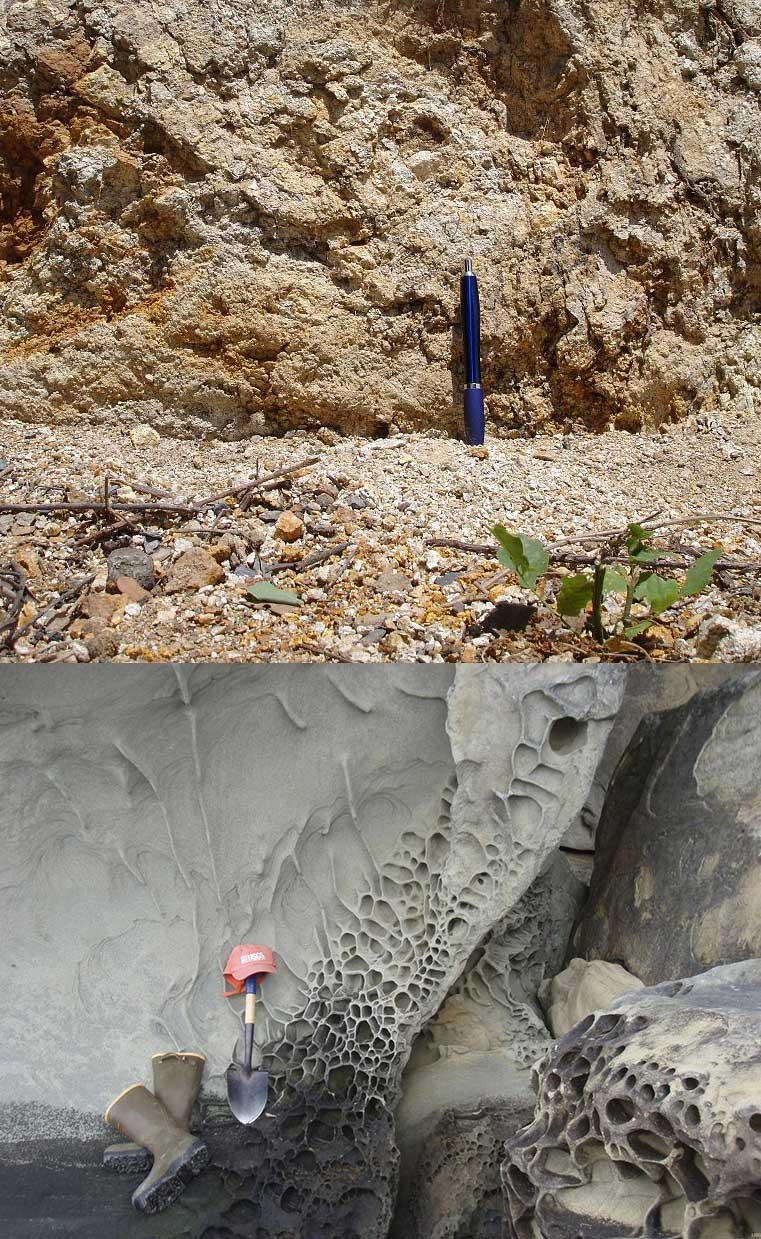Weathering is a fundamental geological process that describes the breaking down of rocks, soils, and minerals through direct contact with the Earth’s atmosphere, water, and biological organisms. It’s a natural, slow process, but profoundly shapes our planet’s surface over time. Weathering is broadly categorized into two main types: physical and chemical, each contributing uniquely to the transformation of rocks.
Physical weathering, also known as mechanical weathering, involves the disintegration of rocks into smaller fragments without altering their chemical composition. Imagine the power of temperature fluctuations. As temperatures rise, rocks expand, and as they cool, they contract. This repeated cycle of expansion and contraction creates stress, leading to cracks and eventual breakdown of the rock structure. Another significant force is water. When water seeps into rock fissures and freezes, it expands, exerting immense pressure that can widen cracks and split rocks apart – a process known as frost wedging. Similarly, the relentless growth of tree roots can penetrate existing rock fractures, acting like wedges and forcing rocks to break.
Chemical weathering, in contrast, involves chemical reactions that change the mineral composition of rocks or dissolve them entirely. The rate of these reactions is significantly influenced by climate. Warmer temperatures and increased precipitation accelerate chemical weathering processes. Water is a key agent, and warmer conditions enhance its reactivity. Furthermore, biological activity plays a role; plant growth, beyond physical disruption, can release organic acids that alter the surrounding chemical environment, increasing acidity and accelerating chemical breakdown.
Over vast geological timescales, the weathering of silicate rocks – a common type of rock containing silica – plays a crucial role in the long-term carbon cycle. Rainwater naturally absorbs carbon dioxide (CO2) from the atmosphere, forming weak carbonic acid. This acid reacts with silicate rocks, initiating a series of chemical reactions that effectively remove CO2 from the atmosphere. The carbon is then transported via rivers to the oceans, eventually becoming locked away in ocean sediments and forming limestone rock. Interestingly, the weathering of limestone itself releases CO2, but this process doesn’t result in a net removal of atmospheric CO2 like silicate weathering. The burning of fossil fuels by humans releases carbon back into the atmosphere at an incredibly accelerated rate, far exceeding the natural drawdown capacity of silicate rock weathering, thus contributing to climate change.
The products of weathering are fundamental to other Earth processes. Weathering directly influences erosion, determining the amount and type of rock material that is carried away by water, ice, wind, and gravity. This eroded material is crucial for soil formation, and over millennia, it shapes the landscapes where sedimentary rocks are deposited. Regional soil quality, including vital nutrient levels like nitrogen and phosphorus, is directly linked to the type of bedrock that undergoes weathering. This, in turn, profoundly affects local biodiversity, as different soil compositions support different ecosystems. Ultimately, over millions of years, large-scale geological events like land uplift, driven by plate tectonics, dictate which rocks are exposed to the surface and subjected to the continuous process of weathering.
In conclusion, weathering is a powerful and multifaceted process that shapes the Earth’s surface and plays a vital role in global cycles like the carbon cycle. From the physical fracturing of rocks by temperature and ice to the chemical alteration of minerals by water and biological activity, weathering is a continuous force transforming our planet. Its effects are far-reaching, influencing everything from soil fertility and biodiversity to long-term climate regulation.
